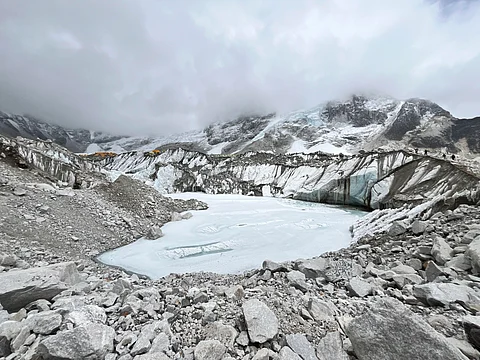

"Dushman bhi agar maan jaaye, toh usay yaqeen se pyar bolna chahiye" (Even if the enemy agrees, one should greet them with trust and love) — Allama Iqbal
In the grand chessboard of international relations, few rivalries are as entrenched—and as perilous—as that between India and Pakistan. The latest flashpoint - the Indus Waters Treaty (IWT), a 1960s-era agreement – is now buckling under the weight of geopolitical tensions, climate change, and the accusations of cross-border terrorism.
The IWT, brokered by the World Bank, was once hailed as a rare triumph of cooperation between two adversarial nations. But today, it stands on shaky ground. India’s recent suspension of the treaty following the Pahalgam terror attack has triggered a diplomatic firestorm. Pakistan, in turn, has framed India’s move as an "existential threat," with General Sahir Shamshad Mirza warning that any diversion of water would be considered "an act of war."
At the UN Conference on Glacier Preservation in Dushanbe, the rhetoric was equally charged. India accused Pakistan of politicising the forum, while Islamabad condemned New Delhi’s "unilateralism."
The tragedy? The real victim here is not just a treaty, but the 220 million people dependent on the Indus Basin—a population caught in the crossfire of a worsening hydrological Cold War.
The Line of Control (LoC) is no longer just a militarised frontier—it has become a laboratory for hybrid warfare. Beyond Visual Range (BVR) engagements, cyber operations, information operations and High-Altitude, High-Endurance (HAHE) drones have redefined combat, besides witnessing aerial 'textbook' ambushes.
Meanwhile, militants in Jammu & Kashmir have already adopted sophisticated guerilla warfare tactics, since 2023, presenting security forces with an evolving challenge, especially in the Jammu sub-region, along Pir Panjal Range.
The danger is not just kinetic or hot war. The securitisation of water—a resource as vital as oxygen—risks turning an environmental crisis into a full-blown conflict. The Himalayan glaciers, South Asia’s lifeline, are melting at an alarming rate. Yet, instead of cooperation, we see blame game and brinkmanship.
Diplomacy or Disaster is the choice left. The South Asian region, home to a quarter of humanity, cannot afford perpetual hostility. The choice is stark. Therefore, the following steps need to be taken up immediately:
1. Track-II Diplomacy & CBMs– Back channel talks and confidence-building measures must be revived. The 2003 ceasefire, though fragile, proved that de-escalation is possible, although India and Pakistan witnessed high-tech limited military confrontation in the month of May and was immediately followed by a ceasefire-a positive sign.
2. Climate Cooperation – Trans-boundary water management should be insulated from politics. A joint India-Pakistan climate task force could mitigate glacier melt and ensure water security.
3. Conflict Resolution Mechanisms – The IWT needs modernisation, not abandonment. A neutral arbiter, perhaps the World Bank again, could mediate disputes.
4. Economic Integration– Imagine a South Asian economic bloc where trade, not tanks, defines relations. The China-Pakistan Economic Corridor (CPEC) and India’s connectivity projects need not be zero-sum.
"An eye for an eye only ends up making the whole world blind," said Mahatma Gandhi.
The South Asian Century will remain a pipe dream unless both nations move beyond tit-for-tat politics. The international community—particularly the U.S., China, Russia, Britain, Saudia Arabia, Turkey and the UN—must nudge Delhi and Islamabad towards dialogue.
The glaciers are melting. But so is time. Before the last drop of goodwill evaporates, a clear, joint, holistic, and sustainable reconciliation package for Jammu & Kashmir on either side of the LoC must be carved out.The glaciers are melting. But so is time. Before the last drop of goodwill evaporates, a clear, joint, holistic, comprehensive and composite sustainable reconciliation package for Jammu & Kashmir on either side of the LoC must be carved out, based on inclusivity, ensuring that all communities, regions, and stakeholders are meaningfully represented.
Such an approach should address political, economic, social, and cultural dimensions to foster lasting peace and development. By prioritising dialogue, trust-building, and equitable resource distribution, this package can pave the way for a harmonious and stable future for the people of Jammu & Kashmir.
Have you liked the news article?